Description
One of the Easiest Houseplants to Grow
The Dieffenbachia or Dumb Cane is a popular tropical that sports cream, yellow or white markings on rich green leaves. It tolerates low light conditions – one reason why it’s such a reliable grower indoors. It prefers warmth and humidity, so make sure to pick the right corner for it. One smart idea is to group it among other houseplants, as they release moisture into the air as they breathe. Speaking of breathing, Dieffenbachia does a great job of filtering and purifying indoor air. Outdoors, it does well in partial sun to partial shade. Placing the plant in full sun may burn the leaves.
So, how did the plant acquire the name Dumb Cane? All of its parts have microscopic needle-shaped calcium oxalate crystals. If ingested, people and pets will end up with a painful, swollen mouth. In some cases, the swelling is so severe, the victim goes silent – hence the name Dumb Cane. Also remember to wear gloves when replanting or handling the plant to avoid coming in contact with its sap.
Caring for your Dumb Cane
Dieffenbachia is a beautiful and rewarding plant to care for. Its low-maintenance nature makes it suitable for plant lovers of all levels. With the right care, your Dieffenbachia will be a vibrant, thriving addition to your indoor garden for years to come. Remember to handle the plant with care, especially when pruning or repotting, due to its toxic sap.
Light
Dieffenbachia flourishes in medium to bright, indirect light. It can adapt to lower light conditions, but this may affect the vibrancy of its leaves. Direct sunlight should be avoided, as it can scorch the leaves, causing brown spots and fading of the variegation.
Water
Watering is a critical aspect of Dieffenbachia care. The soil should be allowed to dry out slightly between waterings. Over-watering can lead to root rot, a common issue with this plant. Check the top inch of the soil; if it’s dry, it’s time to water. Reduce watering in the winter months when the plant’s growth slows down.
To increase humidity, especially in dry environments, you can mist the leaves, place a humidifier nearby, or use a pebble tray filled with water.
Soil
Use a well-draining potting mix. A mixture of peat, pine bark, and perlite is ideal. Repotting should be done every 2-3 years or when the plant has outgrown its pot. Spring or early summer is the best time to repot. Choose a pot that is one size larger than the current one to give the roots room to grow.
Fertilizing
Fertilize Dieffenbachia every 4-6 weeks during the growing season (spring and summer) with a balanced, water-soluble fertilizer diluted to half the recommended strength. Avoid fertilizing in the winter when the plant is not actively growing.
Pruning
Prune Dieffenbachia to maintain its shape and encourage bushier growth. Remove any yellowed or damaged leaves at the base. You can also cut back the main stem if it becomes too leggy, which will encourage new growth from the base.
Propagation
Dieffenbachia can be propagated through stem cuttings. Cut a piece of stem about 4-6 inches long with at least one leaf. Let the cutting dry for a few hours to form a callous, then plant in moist soil. Keep the soil moist and in indirect light until new growth appears.
Pest and Disease Management
Common pests include spider mites, mealybugs, and aphids. These can be managed with insecticidal soap or neem oil. Diseases like root rot are usually due to overwatering. Ensure proper soil drainage and avoid letting the plant sit in water.
Dieffenbachia is toxic if ingested and can cause irritation upon skin contact. The plant should be kept away from pets and children. If skin contact occurs, wash the area thoroughly with soap and water.

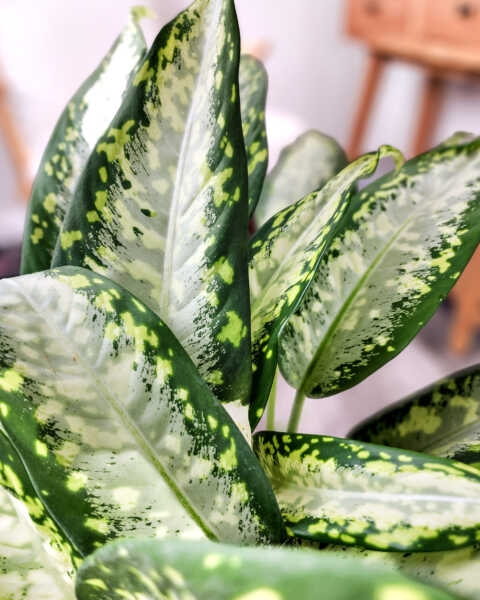

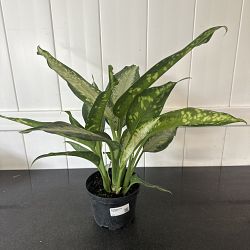
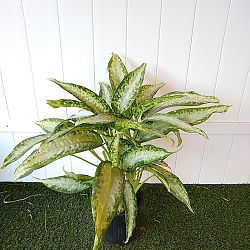

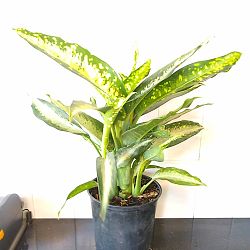





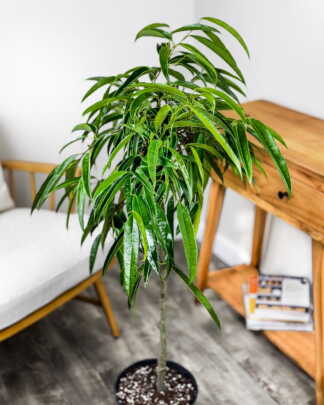



Reviews
There are no reviews yet.